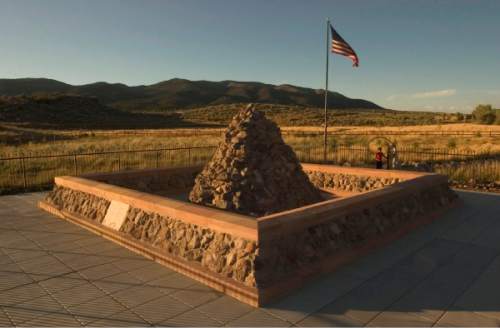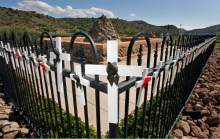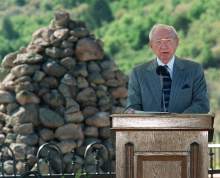This is an archived article that was published on sltrib.com in 2014, and information in the article may be outdated. It is provided only for personal research purposes and may not be reprinted.
They have tackled touchy topics:
Did Mormons really abandon polygamy in 1890? Did Brigham Young order the Mountain Meadows Massacre? Do Latter-day Saints believe a man can become like God?
These are just some of the prickly questions confronted in a string of provocative essays released in the past half year or so by The Church of Jesus Christ of Latter-day Saints.
The aim of these articles is to help devout members, skeptical outsiders and even committed critics better understand the sometimes-sticky theological and historical issues surrounding Mormonism. The scholarly postings appear on the LDS Church's website under the heading "Gospel Topics."
The latest entry, on the faith's Book of Abraham, essentially presents two theories for the genesis of this physically small but doctrinally weighty work of Mormon scripture: First, that Mormon founder Joseph Smith literally translated these words from Egyptian papyrus scrolls that he obtained in the 1830s. Or, second, that these ancient writings merely served as Smith's catalyst for revelation from on high about the great biblical patriarch.
Here is a summary of some of the other intriguing pieces posted on the LDS Church's website:
"Race and the Priesthood" • This article explains that Mormonism's now-abandoned ban on black males holding the faith's priesthood was rooted more in racism than revelation. It traces the policy's beginnings to the church's second president, Brigham Young, and renounces theories developed through the years to justify the prohibition, which ended in 1978.
"Plural Marriage and Families in Early Utah" • This essay noted that polygamy persisted even after then-church President Wilford Woodruff's 1890 Manifesto "declared his intention to abide by U.S. law forbidding plural marriage and to use his influence to convince members of the church to do likewise." After that time, LDS leaders preached monogamy, but some "new plural marriages were performed between 1890 and 1904, especially in Mexico and Canada," as well as "a small number" in the United States, the article states. Polygamy now is strictly prohibited in modern Mormonism. Any member preaching it or practicing it is excommunicated.
"Book of Mormon and DNA Studies" • Latter-day Saints teach that the faith's signature scripture, the Book of Mormon, is a record of three groups of Hebrews who left the Middle East and sailed to the Americas centuries before Christ's birth. This article defends that volume from critics who point to recent DNA research that suggests today's Native Americans carry largely Asian DNA, not Middle Eastern. "The Book of Mormon itself … does not claim that the peoples it describes were either the predominant or the exclusive inhabitants of the lands they occupied," the article says, but only "among the ancestors of the American Indians."
"Becoming Like God" • Do Mormons believe humans can, at some point in the eternities, become like God. The short answer is yes. But this essay cautions that such a simplistic view does a disservice to the doctrine. "Latter-day Saints' doctrine of exaltation is often … reduced in media to a cartoonish image of people receiving their own planets," the article says. " … While few Latter-day Saints would identify with caricatures of having their own planet, most would agree that the awe inspired by creation hints at our creative potential in the eternities." Becoming like God, scholars note, is a far cry from becoming God.
"Peace and Violence Among 19th-Century Latter-day Saints" • This article explores violence committed by and against Mormons in the 1800s. Early saints saw their homes destroyed, their lands lost, their women brutalized and their prophet murdered, but they also perpetrated "inexcusable" attacks of their own — including the infamous Mountain Meadows Massacre — sometimes in retaliation and sometimes in the wake of fiery rhetoric from top LDS leaders. The essay points to the critically acclaimed 2011 book — "Massacre at Mountain Meadows" by historians Ronald W. Walker, Richard E. Turley Jr. and Glen M. Leonard — and concludes that "while intemperate preaching about outsiders by Brigham Young, George A. Smith and other church leaders contributed to a climate of hostility, President Young did not order the massacre."







